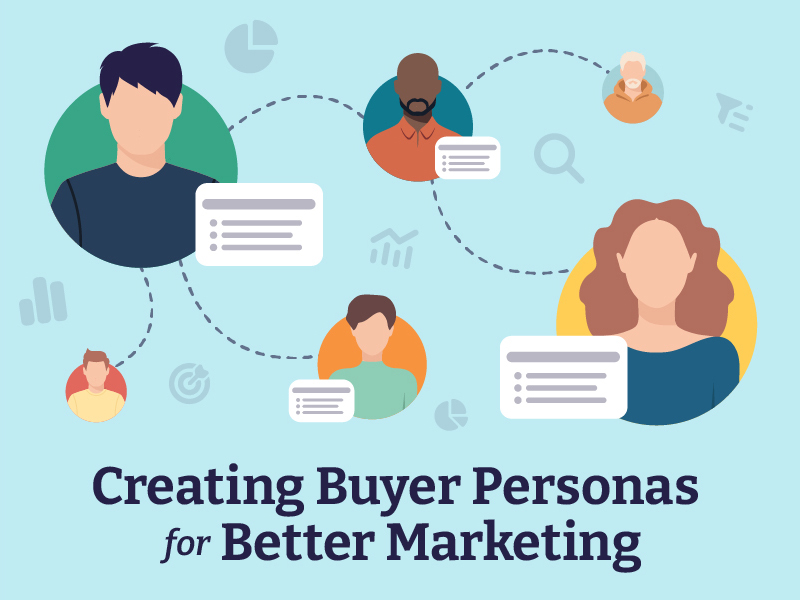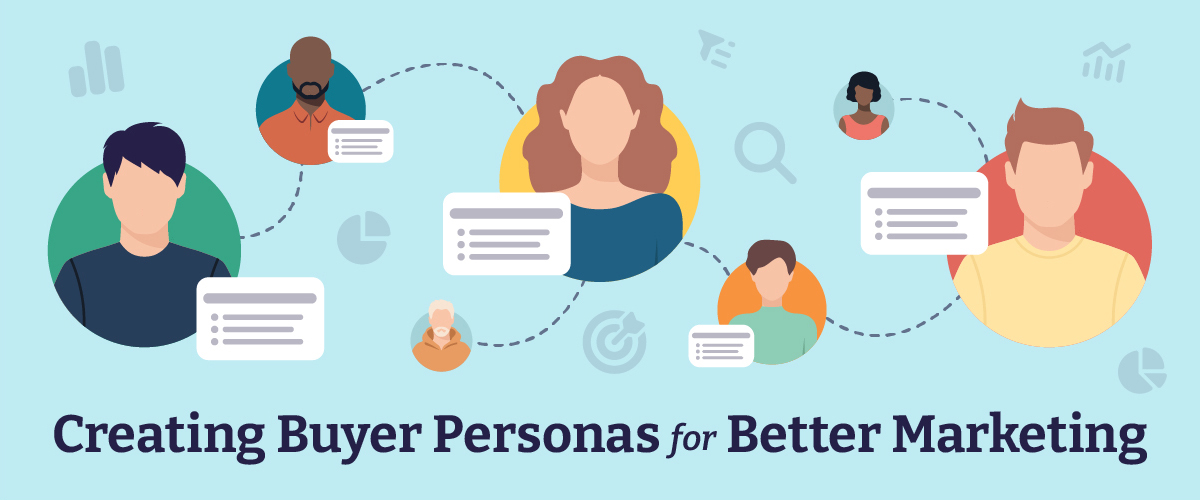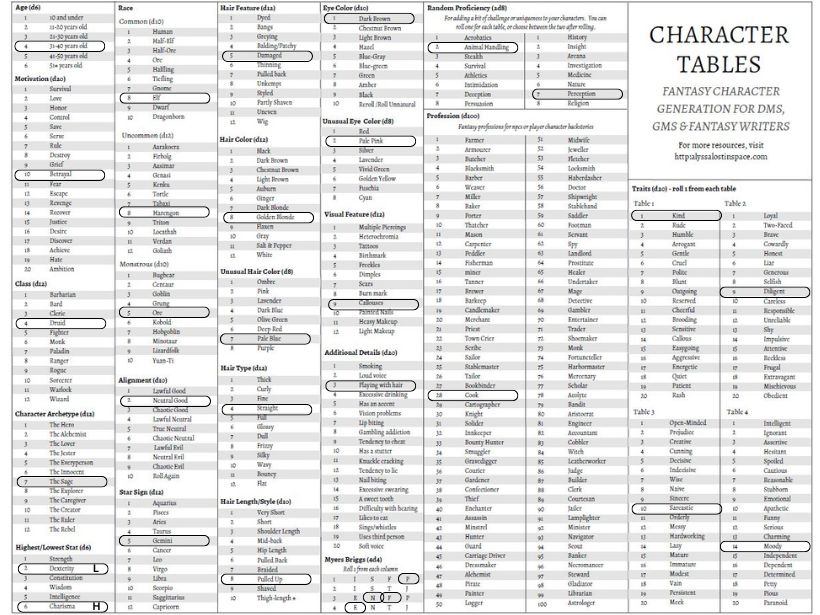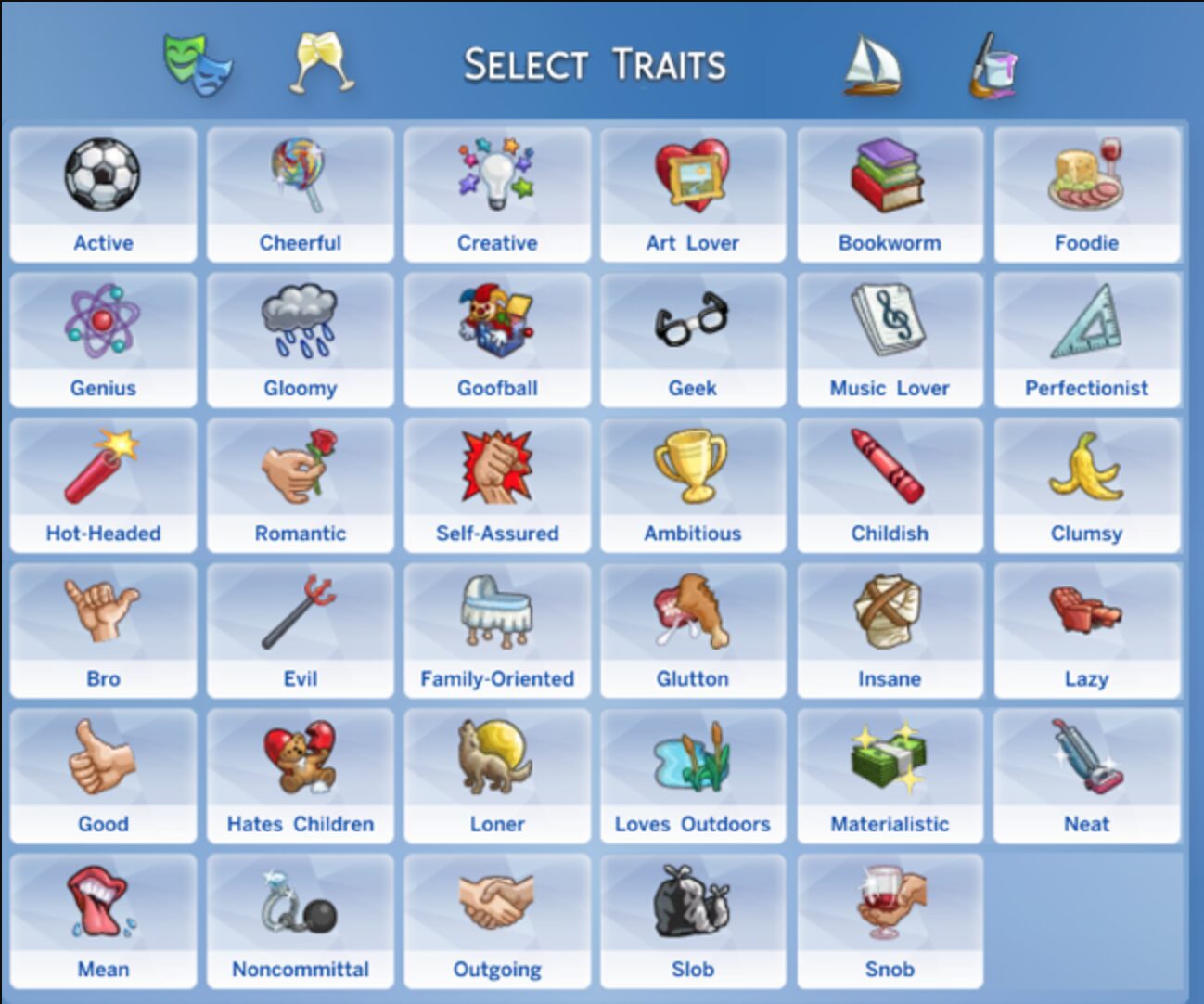Understanding who you’re talking to, what they want to hear, and why they want to hear it are key components of an effective marketing campaign.
You could have the most perfectly crafted copy, ad, or sales pitch, but it means nothing if it isn’t resonating with your target audience.
So, how do you create effective messaging that will resonate?
By developing a deeper understanding of who it is you’re actually targeting.
But how can you do that?
Buyer personas, that’s how!
What Is a Buyer Persona?
A buyer persona is a semi-fictional personification of your ideal customer.
They’re based on real information, research, and insight, but also contain thoughtfully crafted components such as a name, job, and background information.
You can then take that information and create a resource—be it a premade template, spreadsheet, word document, or presentation slide—for future reference. These materials could have an image of your persona included too!
What Do Buyer Personas Do?
Buyer personas help you understand, attract, engage, convert, and retain your ideal customers.
They accomplish this by providing clarity on things like who you’re tailoring your content to, what their needs are, and how you can position your product/answer as the solution to their problems.
When you don’t have buyer personas, you’re taking a one-size-fits-all approach to marketing—and that can have some major hurdles.
Think about the last time you saw an ad, email, or social media post that made you scroll away—even if it was for a product or service you like. If I had to guess, you likely scrolled away due to the messaging.
Like I said, creating strong messaging and branding that connects is a lot easier when you fully understand who you’re trying to connect with. Without a clear audience in mind, you might feel like you’re grasping at straws trying to write content that stands out and resonates.

I’ll get into how to utilize your buyer personas soon, but just to get you excited, here are just some of the benefits:
- Impactful Marketing: Tailor your messaging, content, and campaigns to resonate with your ideal customers, making your marketing efforts more engaging and effective.
- Improved Customer Experience: Understand your audience’s needs, pain points, and preferences to create personalized experiences that build trust and satisfaction.
- Increased Loyalty: When customers feel understood and valued, they’re more likely to return, engage, and advocate for your brand.
- Save Time and Money: Focus your resources on strategies that actually work by eliminating guesswork and targeting the right people from the start.
- Reach New Audiences: Identify gaps and opportunities to expand your reach, connecting with potential customers who align with your brand’s offerings.
Buyer Persona Details
Buyer personas are useful in virtually every aspect and area of your business, so the more thoughtfully you develop them, the more impactful they can be.
What you include in your buyer personas can vary based on your needs, accessible information, and time.
At minimum, your persona should have:
- Name
- Income
- Pain points
- Motivations
- Purchasing behavior
From there, you could add more details based on your specific business needs and industry. Below I’ve listed some categories with various attributes to help you build some more in-depth personas if you like:
Fundamental Details
- Name (you can use a regular name or a themed name, such as “Marketing Mary”)
- Photo
- Age or generation
- Gender
- Location
- Wants
- Needs
- Socioeconomic background
Lifestyle
- Housing status
- Relationship status
- Number of children
- Number of pets
- Number of roommates
- Primary mode of transportation
- Hobbies
Personality
- Personality traits (introvert, cautious, outgoing, etc.)
- Personality type
- Beliefs
- Passions
- Values
- Interests
Education and Employment
- Education level
- Field of study
- Occupation
- Job title
- Industry
- Income level
- Responsibilities
- Experience
- Company size
- Pain points at work
Motivations
- Wants
- Needs
- Goals
- Personal motivations
- Buying motivations
Media Consumption
- Preferred social media platforms
- Content consumed
- Influencers followed
- Frequently visited websites
- Accounts followed
Purchasing Behavior
- Shopping habits
- Amount of pre-purchase research
- Research methods
- Decision process
- Preferred payment methods
- Brands they trust/shop from
- Use or avoid affiliate links
- Buying motivation
Pain Points/Challenges
- Common frustrations
- Obstacles to purchase
- Product/service gaps
- Problems they’re facing
- Buying concerns
- What is the problem your product/service is the solution to?
Brand and Customer Experience
- Preferred communication channels
- Customer support expectations
- Loyalty factors
- What makes them walk away
Again, you don’t need to fill out all of these details—in fact, I recommend you don’t use all of them. Use the ones that make sense for your business and industry and take the time to really develop them.
For example, rather than simply listing “Reddit” for their preferred social media channel, take the time to figure out and list a few subreddits they’d frequent. Or, if your persona follows fashion accounts on Instagram, you could take a look at some of the more popular ones to see what they’re posting.
Not only does it give you a better concept of the buyer, but you can then turn to those sources for further research and social listening.
Tip: Don’t be afraid to have fun and be creative with your inclusions! For example, adding their zodiac sign or Myers-Briggs type can be a fun way to bring your persona to life!
Build Your Buyer Persona
Creating a buyer persona boils down to four steps:
- Determine Inclusions
- Research and gather data
- Fill in details
- Compile and display information
1. Determine Inclusions
First, determine what it is you’re going to include. Having a general idea of the information you need can help you research more effectively.
As always, your inclusions aren’t set in stone—if your research presents additional detail opportunities, include them!
2. Research and Gather Data
You’ll need to do some research to effectively fill out your buyer persona. This research will vary based on what you need, and what you have access to.
- Industry Reports: Gain insights into market trends, consumer behavior, and emerging opportunities to better understand your target audience.
- Competitor Research: Analyze your competitors’ strategies, strengths, and gaps to identify ways to differentiate and appeal to shared audiences.
- Social Media Research: Observe discussions, comments, and engagement patterns to see what topics resonate most with your potential customers.
- Speaking with Current Customers: Direct conversations reveal firsthand insights about motivations, pain points, and decision-making processes.
- Social Listening: Monitor online conversations and brand mentions to uncover trends, preferences, and concerns that influence your audience.
- Analytics: Use website, email, and ad performance data to identify behavioral patterns and refine your targeting strategy.
- AI: Leverage AI-driven tools to analyze data, predict trends, and generate deeper insights into customer preferences and behaviors.
3. Fill in Details
Next, it’s time to fill in any gaps or remaining details. These might be things that are undeterminable from research, or what you know to be accurate based on your experience.
These extra details are things that you’re going to have to get a little creative with and maybe make a few assumptions about in order to fill out this make-believe buyer. This could look like:
- Contextual Information: How to reach them, what content are they likely to engage with, what communication style will resonate with them, etc
- Personal Life: Hobbies, what makes them purchase vs. wait to purchase, red flags, what makes them recommend a product, etc.
- Effective Solutions: How-to guides, webinars, educational email newsletters, etc.
Tip: If you find yourself at a loss for words, or often repeating the same few descriptors, check out an emotion or feelings wheel—they break down common emotional states, like “happy” into more specific emotions and terms. There are also a few other types, such as personality wheels, out there, too!
What If You’re Just Starting Out?
But what if you’re just starting out, and don’t have any information at all?
No worries, you can still create effective buyer personas, and continue to develop them as your business grows. Some ways to do so include:
- Looking at what your competitors are doing, and identifying who their content might be speaking to.
- Identifying industry trends to understand audience behaviors.
- Work backwards—what does your product/service solve? What makes you stand out from competitors?
- Think of your ideal customer, and create a buyer persona based on them.
Tip: A great way to familiarize yourself is to build a buyer persona of yourself.
4. Compile and Display Information
As I said earlier, there are several ways you can compile and display your buyer persona.
The option you go with will largely depend on your preferences and needs—ultimately, it all comes down to what works best for you and your business.
Persona Creator Tools
Many places have their own creator tools—typically an interactive module or sheet.
For example, Mainstreethost has our Target Audience & Buyer Persona worksheet, HubSpot has their “Make My Persona” tool, and Semrush has their “Persona Wizard” creator.
These are a great place to start, and I’d consider them the classic way to create buyer personas.
Documents and Templates
You can build your buyer personas in a Word document, spreadsheet, deck, or by using a graphic design tool like Canva or Adobe.
If you opt for a graphic design tool, there will likely be some great templates you can choose from, making it even easier.
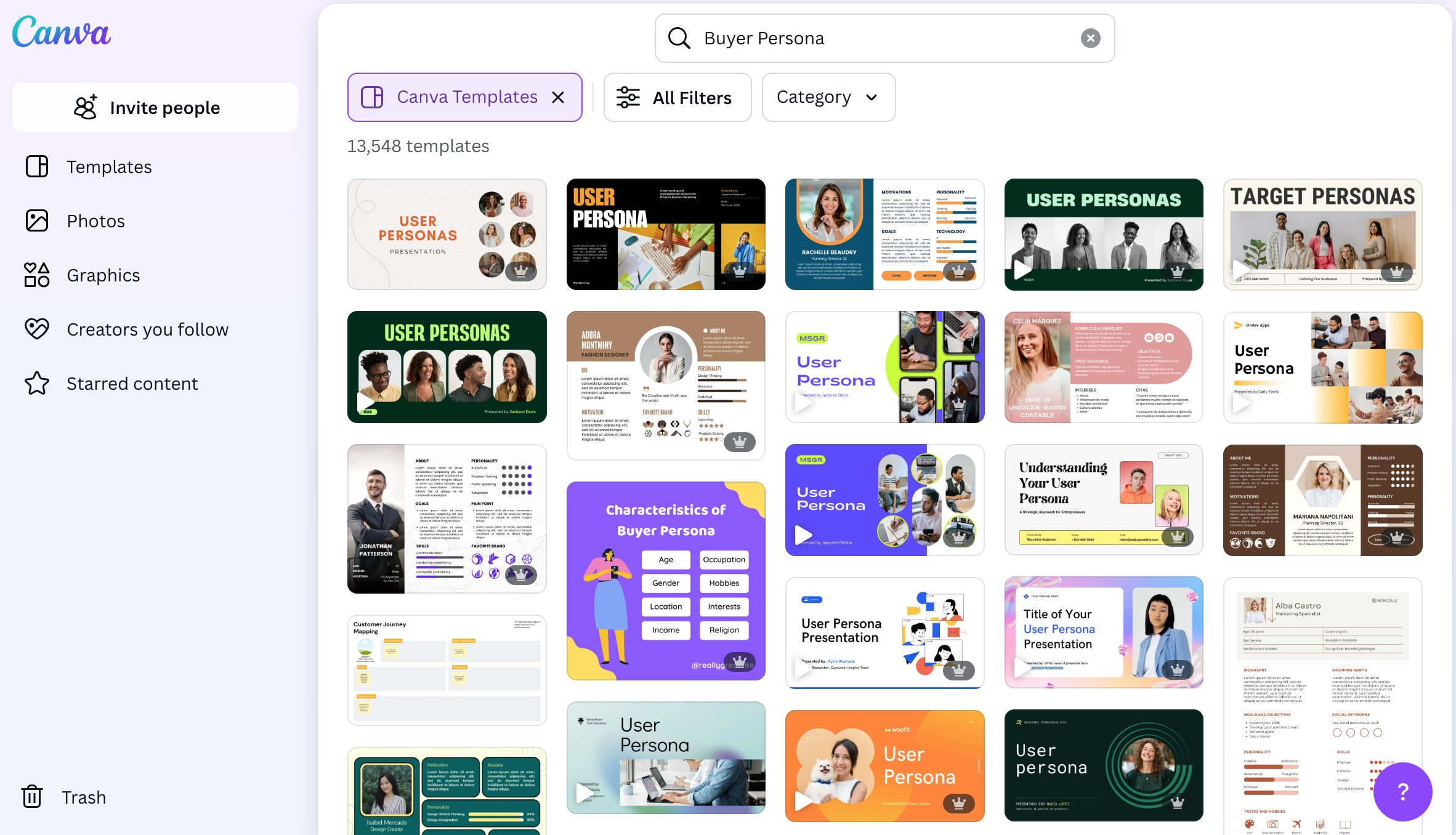
AI Chatbot
Lastly, you can always plug your persona’s information into a conversational AI platform (such as ChatGPT or Gemini) and have it organize it into a persona—and even fill in the blanks—for you.
But, if you’re looking to get a bit more creative…..
Creative Ways to Bring Your Buyer Persona to Life
There really are no shortage of creative conceptualizations and additions that can make the whole process fun!
Tabletop Role-Playing Game Resources
As someone who loves all things nerdy, TTRPG (Tabletop Role-Playing Game) resources are kind of perfect when it comes to buyer personas.
There’s a few ways these resources could work.
The first is using a character sheet—such as D&D’s 5E sheet—to display your buyer persona.
The other ways involve using a character or NPC creation guide—be it an official GM/DM handbook, or any number of free online resources—to either round out or fully build your buyer persona.
These guides are great for digging deep and going beyond the usual descriptors, or helping you think of descriptors in a different way. For example, “high charisma” means more than “they are charismatic”—it could mean that they are a great leader or public speaker, are able to make people feel comfortable, or are generally someone others are drawn to.
Each guide will be different, but they’ll all have (more or less) the same format—a series of tables for physical traits, background information, personality, and more!
Then, it’s just a matter of rolling the listed dice for each table to get your different traits and characteristics. For example, this fantasy character generation table created by Alyssa Flynn has a section for “character archetype” that you roll a D12 (a twelve-sided die) for.
PS: If this interests you, but you don’t have dice, don’t worry—there are a ton of free dice rollers (like this one) online!
Now, if you’re using these guides to completely build your persona, you might roll some areas that don’t perfectly fit, like getting “Rogue” for class.
While you can always reroll, it can be worth it to take the time to think about how that could translate into something tangible and practical.
If you’re curious to see what this might look like, you’re in luck. Imagining I owned a small soap shop, I built the following buyer persona using Alyssa Flynn’s character table:
Age: 31–40
Motivation: Betrayal —> Bad experiences with other shops or products
Class: Druid —> Close connection to nature
Lowest Stat: Dexterity —> Clumsy, prone to scrapes/bruises/cuts
Race (Common): Elf —> Loves nature, expressive
Hair Feature: Damaged —> Needs specific hair products
Hair Length/Style: Pulled up —> Avoids styling hair due to damage, profession, and lack of time.
Visual Feature: Calluses—> Needs extra moisturizer, targeted healing
Random Proficiencies: Animal Handling —> Close with nature/animals. Prefers vegan or cruelty-free products
Profession: Cook —> Likely has minor cuts, burns, etc. Works long or unusual hours.
Traits:
- Kind —> Willing to donate/buy products that donate proceeds to charitable causes
- Diligent —> Aware of and actively reads ingredients on products
- Sarcastic —> Possibly dry/sarcastic ads would resonate
- Moody —> Moody colors, or gothic themed products/packing
So, using this information, I might…
- Create social media posts showcasing our moisturizing hand soaps.
- Write website copy that highlights our commitment to sustainability and cruelty-free status.
- Craft an ad for our extreme hand salve, focusing on its ability to repair cracked skin with a non-greasy and long-lasting formula.
- Write a blog post about how to develop—and keep—a skincare routine, even when you’re busy.
…you get the idea.
Tip: While all my buyer personas are human, I do roll for their race, and incorporate characteristics from the result.
Day in the Life
Another great way to bring your persona to life is to imagine them making a “day in the life” TikTok.
How would their day start? What about their day would stand out? What issues might they run into throughout their day?
As you visualize this, jot down your thoughts and ideas. These will be great anchor points for building your persona.
Celebrities/Characters
We’d all love for one of our favorite celebrities or characters to work with our company (or, in the case of characters, exist to begin with!).
For example, a makeup artist who specializes in bold, avant garde looks might have Chappell Roan as their buyer persona. Whereas a makeup artist who focuses on more minimal, classic, “clean girl aesthetic” looks might turn to a celebrity like Hailey Bieber.
If you’re a coffee shop owner, you might include Lorelai Gilmore as one of your buyer personas.
A dog training business might have Fallout 4’s Sole Survivor and Dogmeat as their ideal client-dog duo.
As you build your celebrity or character persona, you can look up more information about them to add additional details. In doing so, you’ll likely find out a bit more about the public opinion about your persona—good and bad. These are also great to keep in mind.
Video Games
Consider making your buyer persona in a video game, or using metrics in the game to guide your creation.
Now, this works well with any games that have you assign ideals or traits to your character. Similar to the TTRPG example, you can either use the given options as guidance, use the options to build your persona, or create your persona in-game, essentially. Some examples include:
- Fallout’s SPECIAL system
- Fallout’s Perks
- The Sims traits, likes/dislikes, and aspirations in Create a Sim
- Baldur’s Gate 3 character creator (though this is basically the same as a D&D one)
- Wasteland 2’s CLASSIC system
- Disco Elysium’s attributes, archetypes, and skills
How to Leverage Your Buyer Personas
Now that you have your buyer persona(s), you can use them to help make informed decisions that speak to your customers.
Sales
When it comes to sales, buyer personas can help with:
- Tailored Pitches: Use your personas to form your opening pitches.
- Training: Train your sales team to use buyer persona insights to adjust their messaging.
- Effective Follow-Ups: Use preferred communication channels to follow up in a way that feels natural and engaging to clients aligned with certain personas.
- Objection Handling: Anticipate common objections based on persona concerns and prepare preemptive responses that address those concerns.
- Upselling & Cross-Selling: Suggest additional products or services based on the persona’s buying habits and needs.
Marketing
Your buyer personas can make creating effective marketing materials a breeze.
- Content Customization: Develop specific and tailored content, such as blog posts, guides, website content, and videos that address specific challenges, goals, and questions your personas have.
- Tone & Voice Alignment: Craft brand messaging that speaks directly to your personas. (Again: it’s not just what you say, it’s how you say it.)
- Email Marketing Segmentation: Segment your email list based on personas for more personalized outreach.
- Relatable Case Studies: Develop success stories featuring customers that align or resonate with each persona, helping potential buyers see themselves in the success of others.
- Advertising: Use persona insights to create more effective PPC and social media ads that resonate.
- Platform Selection: Focus on the social media platforms where each persona spends the most time to maximize reach and engagement.
- Social Listening: Monitor conversations related to your industry and persona interests to engage in real-time, build relationships, and improve offerings.
- Customer Service on Social: Ensure your support team is available on the platforms preferred by each persona to provide fast and convenient assistance.
Business Growth
Buyer personas can also help in your product development, and overall business approach, too!
- Customer Experience Enhancement: Optimize the buying journey, checkout process, and post-purchase experience based on persona behaviors and preferences.
- Market Expansion: Use persona insights to identify new audience segments and untapped markets.
- New Features: Use persona pain points to guide new feature development and updates.
- Pricing Strategy: Adjust pricing or create different packages to accommodate for the needs of your personas.
- Localization: If expanding into new regions, tailor messaging, offers, and cultural references to match local buyer personas.
Customer Support
Customer support is crucial—being prepared with as much information as possible about your customer can help you provide effective solutions, and problem solve in a timely manner.
- Preferred Support Channels: Offer support via the platforms personas prefer—some may prefer self-service FAQs, while others need live chat or phone support.
- Response Personalization: Train your support team to address issues in a way that aligns with persona expectations—some might want quick, efficient resolutions, while others appreciate more detailed guidance.
- Proactive Problem Solving: Use persona data to predict common issues and provide preemptive solutions via blog posts, guides, and knowledge bases.
What Will Your Buyer Persona Look Like?
At the end of the day, your business exists to serve people—and buyer personas can help you serve them better.
Just stick to what you know about your customers, your values, and your business and building your buyer personas will be a breeze.
And as your business grows and evolves, so too should your buyer personas! By continuously updating, refining, and creating more buyer personas, you can keep your strategies fresh, effective, and impactful.
Trust me, your future customers will thank you.

